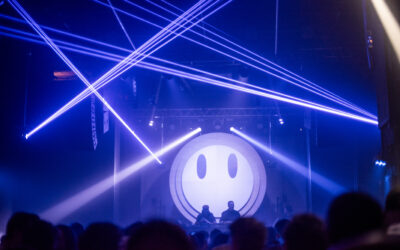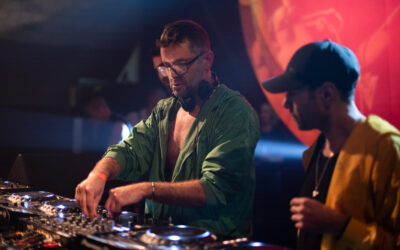On a flash estate in Stratford, London, I look up between two blocks of flats and spot the Olympic Tower (The ArcelorMittal Orbit). Around me is the 2012 Olympic Legacy, with whitewashed walls, fresh roads and the the decadent Westfield Shopping centre. Take a trip back in time, to the 1980s and this place was “desolate and bleak” according to Terry Carr. Terry, a manager at an Essex haulage firm, was once at the forefront of the rave scene in the late 1980s. It was here, on Cooks Road in 1988, that a rave organised by an Inter City Firm (ICF) founder, Andy Swallow took its place in underground music history.
The late 80s were a pivotal time for music across Britain, with London acting as a major contributor to the emergence of acid house. This was a time that old rivalries, such as those waged by the ICF were massively downsized in the wave of raving, with some going as far as to call 1988 the ‘second summer of love’.
As I pass the turning on Cooks Road, I’m given the rundown of events by Terry in crystalline detail. Clearly, that fabled night in 88 made some impression on Terry, now in his mid-fifties.
The music of the night was acid, spread across four rooms in industrial settings. It was a question of necessity at this time rather than aesthetic, with a lack of legal alternatives to host such parties. Entrants were charged ‘a tenner’ and given a glimpse of a new energy and all night partying, unseen in London at the time. “It was a complete first for me, the sheer energy of the sound and then staying out until 6am” Terry explains, “but as soon as you left the place, old bill was all over everyone, pushing you up against the wall and everything”.
Many raves were shut down by police, which was to be increased exponentially following 1994 Criminal Justice Act. The years 1988-89 appears to be the golden era for acid house as it took off across the UK, with 223 raves reported to police in one summer alone. It was a time that masses of working class people came together to forget notions of politics, downturn and division. This is explained further by Clive Morris as we drink coffee in a Billericay Cafe. Clive, a crane driving operator, is also in his mid fifties, and remembers waiting for a telephone call to find the location of a rave in 1989.
“It was all word of mouth, really. At 10 someone got the call and we were all hopping in cars and driving to Chobham Common. It was a great night, until the police came” As I found out after, a special feature of Clive’s Surrey rave was the fact that none other than the legendary Carl Cox was the DJ that night. Both Terry and Clive light up as they relay memories of those nights. A lot has changed for the men since, and the same is true for dance music in general.
With people worldwide paying to attend well organised all night and day parties, the demand for raves has only skyrocketed. The splintering of genres, venue competition and global clubbing brands have sent shockwaves across the music scenes globally. Illegal raves may still be alive and well in the cities capital, but none have the same youthful energy found within the original acid raves of the late 1980s. Raw, loud and groundbreaking, with a pleasant lack of Iphones, the memories of these crucial events are to be found mostly with the acid generation.




